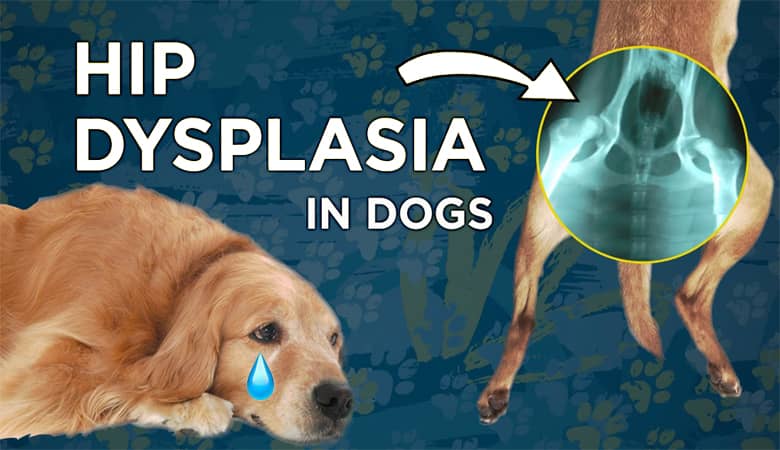The hip is a ball and socket joint at the intersection of the leg and the pelvis that allows for bone movement along several different axes. When the ball (head of the femur) or the socket (acetabulum of the pelvis) forms improperly, hip dysplasia develops, leading to joint laxity or luxation. Eventually, increased friction in the dysplastic joint can cause cartilage loss, inflammation, and pain—a condition known as osteoarthritis.
Hip dysplasia in dogs is common, particularly in large and giant breeds that gain weight and grow more rapidly than their smaller canine counterparts.The severity of hip dysplasia can vary from mild to severe and signs may develop early in life or later, as osteoarthritis develops. Owners of young pets with hip dysplasia will often notice rear limb lameness or limping, a swaying gait, or a narrow stance. Older pets affected by hip dysplasia may show the aforementioned signs or those more consistent with osteoarthritis such as stiffness, difficulty rising or lying down, or decreased activity levels. Still, some pets with hip dysplasia develop few to no clinical signs at all.
Treating canine hip dysplasia
The recommended treatment for canine hip dysplasia is highly dependent on the severity of the disease, the presence of clinical signs, and the pet’s age. Puppies or young dogs with severe hip dysplasia may require surgical correction in order to avoid a lifetime of pain and discomfort. If hip dysplasia is diagnosed later in life, surgery may still be an option, or medical management can be pursued.
Medical management of hip dysplasia typically involves a multi-modal approach to minimizing pain and inflammation with the goal of patient comfort, not disease cure. Your veterinarian may recommend:
- Prescription anti-inflammatory medications
- Joint and cartilage protective supplements
- Physical therapy or hydrotherapy
- Limited exercise routine
- Maintenance of a lean body weight
How owners can help their dogs with hip dysplasia
Your veterinarian should always be your first resource if you are concerned about hip dysplasia in your dog. Since signs of the disease can mimic those of other conditions, achieving a proper diagnosis is important before initiating treatment. Once a diagnosis is made (or suspected), you and your veterinarian will decide on an appropriate plan of action to keep your pet comfortable and slow the progression of the disease. This often includes a host of small changes that owners can make at home for their pets. Modifications may include:
- Placing rugs or mats on hard floors to minimize slipping
- Utilizing ramps to allow pets easier access to vehicles, beds, or other surfaces
- Placing toenail grips for improved traction
- Using a sling or harness to help pets with rising, walking, or climbing stairs
Laser therapy is another therapeutic option for the pain and inflammation associated with hip dysplasia and osteoarthritis—now available for in-home use. Traditionally, laser therapy was only offered in specialized veterinary clinics equipped with the technology. Thanks to modern advancements in veterinary medicine, cold laser therapy for dogs at home can now be used safely, under the guidance of your veterinarian. B-Cure Laser Vet is a handheld Class 2B laser therapy device capable of helping pets with hip dysplasia by encouraging blood flow and lymphatic drainage, increasing enzyme and collagen production, and decreasing discomfort. And, while most other veterinary therapeutic lasers on the market have additional safety precautions, the B-Cure Laser Vet is safe for at-home use without the need for protective eyewear or other personal protective equipment. With its ease of use, excellent safety profile, and potential to increase pet comfort, the B-Cure Laser Vet is an excellent addition to any home with pets suffering from hip dysplasia or other orthopedic conditions.
For more information regarding hip dysplasia and osteoarthritis treatments or laser therapy, contact your family veterinarian.

